Azuara impact structure, Spain: shock metamorphism
A comprehensive article on the Azuara shock effects with emphasis on the F. Langenhorst and A. Deutsch quarrel may be clicked HERE.
Highly shocked polymictic dike breccia (near Santa Cruz de Nogueras, 30660971E, 4553223N). Typical shock effects in the breccia are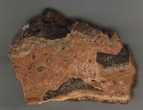 |
||||
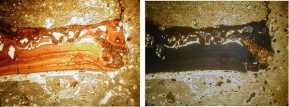 A A
|
||||
 BB: Diaplectic glass; photomicrograph of a sandstone fragment completely transformed to diaplectic quartz; plane polarized light and xx nicols. Note that there are a few holes in the thin section not to be confused with diaplectic quartz grains. The field is 600 µm wide. BB: Diaplectic glass; photomicrograph of a sandstone fragment completely transformed to diaplectic quartz; plane polarized light and xx nicols. Note that there are a few holes in the thin section not to be confused with diaplectic quartz grains. The field is 600 µm wide. CC: Planar deformation features (PDFs) in quartz grains; sandstone fragment from the shocked breccia. Photomicrograph, plane polarized light; the field is 800 µm wide. Note the large number of grains showing PDFs, their high density, the small spacing and the multiple sets. Up to five sets of different PDF orientation per grain have been observed in the dike breccia. CC: Planar deformation features (PDFs) in quartz grains; sandstone fragment from the shocked breccia. Photomicrograph, plane polarized light; the field is 800 µm wide. Note the large number of grains showing PDFs, their high density, the small spacing and the multiple sets. Up to five sets of different PDF orientation per grain have been observed in the dike breccia. DD: Planar fractures (PFs; cleavage) in quartz. Photomicrograph, xx nicols; the field is 450 µm wide. Note that at least six sets of different orientation can be observed. Cleavage in quartz is very uncommon in tectonically deformed quartz. In rare cases, rhombohedral fracturing is observed to occur in rocks which underwent strong regional metamorphism. In rocks from impact structures, PFs in quartz belong to the regular shock inventory. DD: Planar fractures (PFs; cleavage) in quartz. Photomicrograph, xx nicols; the field is 450 µm wide. Note that at least six sets of different orientation can be observed. Cleavage in quartz is very uncommon in tectonically deformed quartz. In rare cases, rhombohedral fracturing is observed to occur in rocks which underwent strong regional metamorphism. In rocks from impact structures, PFs in quartz belong to the regular shock inventory.  E E
E: Kink bands in biotite from the shocked polymictic breccia. Photomicrograph, crossed nicols; the field is 840 µm wide. – Although kink bands can form under static conditions of strong regional metamorphism, the high frequency of the kink bands shown here, their narrow width, and their high kink-angle asymmetry point to shock deformation. The shock-metamorphic effects shown here correspond to a broad range of shock pressures. The melt glass, however, shows that parts of the breccia must have experienced shock peak pressures exceeding 500 kbars (50 GPa).
|
|
|||
Rubielos de la Cérida impact structure, Spain:
Rubielos de la Cérida impact structure, Spain:
Part of a large (some 300 m size) quarry exposing limestones (Muschelkalk Fm.) drastically destroyed through and through (A).
Within the completely brecciated rocks (displaying gries brecciation and mortar texture), white blocks (up to cubic-meter size) of carbonate material (B) are intercalated.
The low-density, highly porous material shows a distinct vesicular texture (C – the field is 7 mm wide).
Interpretation: A compressive strength of perhaps 150 – 200 MPa (= 1.5 – 2 kbar) for these massive and dense Muschelkalk limestones assumed, they must have experienced pressures clearly exceeding these values not only locally but throughout the huge volume. Whereas a tectonic origin can be excluded without any doubt, deformations like that are expected to occur in the cratering process (excavation and/or modification stage) of large impact structures. The intercalated white vesicular material is considered to be the relics from decarbonization and/or carbonate melt produced by shock or strong frictional heating.
Are bent planar deformation features (PDFs) no PDFs?
PDFs are planar shock deformations in minerals (especially quartz) in the form of closely spaced isotropic lamellae following crystallographic planes (Fig. 1). They may be decorated by fluid and/or mineral inclusions as the result of annealing.

Fig. 1. Planar deformation features in quartz; Ries impact structure. Photomicrograph, crossed polarizers; the field is 460 µm wide.
According to current knowledge, PDFs cannot form in endogenetic geologic processes. Therefore, the occurrence of PDFs plays an important role in the establishment of authentic impact structures. And here, a problem turns out. In the past, curved PDFs have repeatedly been claimed to be of non-impact origin, and we mention for example the paper written by Reimold, W.U. & Koeberl, C. (2000): Critical Comment on: A.J. Mory et al. ‘Woodleigh, Carnavon Basin, Western Australia: A New 120 km Diameter Impact Structure EPSL v. 184, pp. 353-357). In this paper we read:“However, ‘planar’ and ‘locally curved’ represent a contradiction. There are several papers in the literature (e.g. [2,3]) that demonstrate that non-planar lamellae are not shock-diagnostic evidence.”
What are the facts? In general, PDFs in quartz are indeed straight and parallel (Fig. 1) due to crystallographic planes in an undeformed crystal lattice. However, as is well known, quartz crystals may undergo plastic deformations resulting in a deformation of the lattice. In thin section, these deformations are easily seen in the form of undulatory extinction on rotation of the stage of the polarization microscope. Obviously, the crystallographic “planes” in the crystal are no longer plane.
What happens when a shock wave impinges on an already plastically deformed quartz grain to produce PDFs in it? We think that according to definition, the PDFs will develop with respect to the deformed lattice, and, consequently, they must be bent.
What happens when a shock wave impinges on an undeformed quartz crystal to produce straight and parallel PDFs, and the crystal experiences a post-shock plastic deformation? According to the critics of bent PDFs, it’s true the lattice becomes deformed displaying undulatory extinction, but the PDFs must remain straight. As, however, they are no longer following the crystallographic orientation, these PDFs are no PDFs. Everything all right? We to the contrary see things much simpler and predict bent PDFs reflecting the deformation of the crystal lattice.
As an impact may affect a tectonically overprinted target, bent PDFs in pre-shock plastically deformed quartz must not be surprising. On the other hand, bent PDFs from post-shock plastic deformation are expected to develop in the impact cratering process itself (in the excavation and modification stages) not excluding a later tectonic overprint and further bending of PDFs.

Fig. 2. Two sets of slightly bent PDFs in quartz. Photomicrograph, crossed polarizers; the field is about 1.5 mm wide. – Shocked quartzite cobble from crater 004 of the Chiemgau impact strewnfield (see. http://www.chiemgau-impact.com).
We conclude and express (what we have been doing since many years) that curved PDFs (Fig. 2) must belong to the shock inventory of impact structures and that they may even be diagnostic if the bending is correlated with undulatory extinction proving crystallographic orientation. In Fig. 3 we show photomicrographs obtained from the rotation of the stage of a polarization microscope (xx polarizers), and we can clearly observe that the bent PDFs are intimately associated with the undulatory extinction.

Fig.3. Bent PDFs closely corresponding with undulatory extinction of the quartz grain. Photomicrographs taken by stepwise rotation of the stage of the polarization microscope. Same quartzite cobble as in Fig. 2.
In March and April 2000, Dr. Ann Therriault (Geological Survey of Canada, and co-worker of Dr. R.A.F. Grieve) made a very thorough PDF analysis of sedimentary samples from the Azuara impact structure in Spain. She analyzed quartz from a strongly shocked dike-breccia clast and from the Pelarda Fm. ejecta and found among 48 measured PDF sets 9.3 % basal, 40.7 % ω, 12.9 % π, 12.9 % ξ, 7.4 % r,z and subordinate s, x and m PDFs. And Dr. Therriault explicitly stated in her report “… many curved PDFs!!“ (see Fig. 4, and for the PDFs histogram:https://www.impact-structures.com/impact-spain/the-azuara-impact-structure/shock-effects-shock-metamorphism-in-rocks-from-the-azuara-impact-structure/).
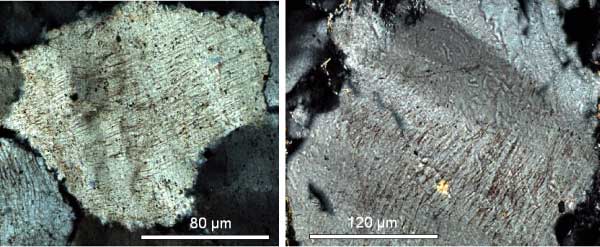
Fig. 4. Sets of bent PDFs in quartz; quartzite cobbles from the Pelarda Fm. ejecta of the Azuara impact structure (Spain).
We want to add that meanwhile there are other impact researchers having become aware of peculiar post-shock processes in impact target rocks, and we especially point to an LPSC XXXV (2004) abstract article (http://www.lpi.usra.edu/meetings/lpsc2004/pdf/1730.pdf) on the Charlevoix impact structure. In Fig. 1 of that article nicely bent PDFs in quartz parallel to {0001} are shown (copied to our Fig. 5), and we cite from the text: “Bent planar deformation features (PDFs) can reflect the continuous bending of the crystal lattice (Fig. 1).”

Fig. 5. Bent planar deformation features (PDFs) in quartz from the Charlevoix impact structure. (from Trepmann and Spray 2004).
In fact and strictly speaking, “bent planar deformation features” is a contradiction in terms, but as long as we understand that PDFs refer to the crystal lattice and not to the mathematical definition of a plane, a renaming seems to be dispensable.
An Impact Crater Chain in Northern Spain
An Impact Crater Chain in Northern Spain
by K. Ernstson1, U. Schüssler2, F. Claudin3 & T. Ernstson4

Fig. 1. Location map for the Azuara – Rubielos de la Cérida impact crater chain (frame in Fig. 2) and suspected impact locations (A, B, C).
The term impact crater chain is commonly used when there are three or more lined up impact structures that have formed in a single impact event. Apart from a few established paired craters (e.g., Clearwater West and East in Canada, Ries and Steinheim Basin in Germany), three terrestrial crater chains with well-separated structures have so far been proposed. The alignment of eight structures in Missouri, USA, is peculiar, but age considerations do not speak in favor of a single event, and only two of them are established impact craters. The well-known Aorounga imapact structure in the Chad may be accompanied by one or possibly two additional craters, but respective field evidence is outstanding. In 1998, a single impact event thought to have formed five individual structures, though spread over two continents, has been suggested. On the other hand, multiple impact structures are well known from the Moon, Mars, Venus, and Jupiter’s satellites Ganymede and Callisto. Especially the detection of the impressive crater chains on Ganymede and Callisto, mysterious until the 1994 crash of the torn Shoemaker-Levy 9 comet with Jupiter, raised new interest and initiated investigations about multiple impacts by disrupted asteroids and comets. Here, we report on the previously established Mid-Tertiary Azuara impact structure in Spain and its nearby Rubielos de la Cérida companion crater as parts of a more or less continuous crater chain, the first of this kind known on Earth, of more than 100 km length (Fig. 1, 2).
Fi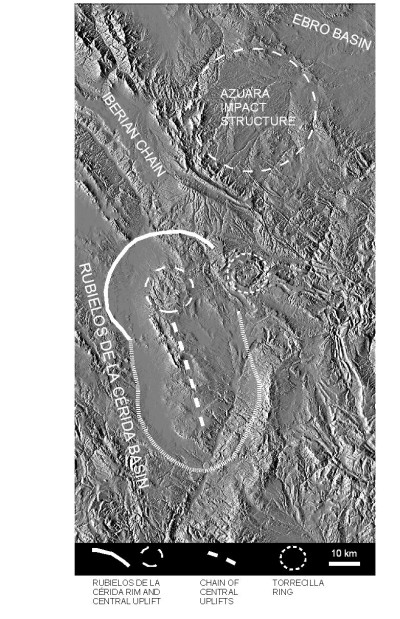 g. 2. The topography of the Azuara/Rubielos de la Cérida crater chain. (from the digital map of Spain, 1 : 250,000; provided by Manuel Cabedo).
g. 2. The topography of the Azuara/Rubielos de la Cérida crater chain. (from the digital map of Spain, 1 : 250,000; provided by Manuel Cabedo).
The detection of the suggested impact crater chain has been a long process. It begins in the eighties and early nineties with the establishment (by K. Ernstson and co-workers) of the 35 – 40 km-diameter Azuara impact structure at the margin between the Alpidic fold belt of the Iberian Chain and the Tertiary Ebro Basin (Fig.2). The structure is affected by advanced erosion and partly covered by post-impact sediments, and a very soft sedimentary target may have contributed to an altogether weak morphological signature. However, in the rim region, there is abundant and impressive evidence of the giant impact event macroscopically documented by the occurrence of various kinds of typical impact rocks, dislocated megablocks and extended impact ejecta. On a microscopic scale, strong shock metamorphism in the form of melt glass, diaplectic glass (a glass produced by shock damage and not by melting) and all kinds of planar deformation features in minerals is found. According to these occurrences, Azuara figures in the international Earth Impact Database of currently about 165 authentic impact structures worldwide.
In 1994, K. Ernstson and co-workers made a first reference to a suspected companion crater, the Rubielos de la Cérida structure, of similar size, located some 50 km south-southwest of the Azuara structure, and of the same Mid-Tertiary age. Meanwhile, Rubielos de Cérida presents all evidence of an impact structure. It shows the complete impact inventory as are a distinct morphology including a prominent central uplift, peculiar structural features, extended impact ejecta, suevite breccias, impact melt rocks, and strong shock metamorphism (Fig.3). As especially peculiar finds in and around the Rubielos de la Cérida structure, we mention
- melt rocks composed of nearly pure silicate glass.
- a carbonate-phosphate melt rock composed of calcite globules in a matrix of phosphate glass. This melt rock is assumed to reflect a liquid immiscibility of a carbonate and a phosphate melt similar to a liquid immiscibility of carbonate and silica melt found in impact rocks from, e.g., the Ries and Haughton craters.
- glassy amorphous carbon particles in a hitherto unknown bond with oxygen, possibly fullerenes. The amorphous carbon may have originated from extremely shocked limestones or as a quench product from shock-melted coal in the target rocks.
- large deposits of in situ shocked conglomerates which are composed of quartzite cobbles displaying prominent fractures and craters formed by collision and impact spallation.
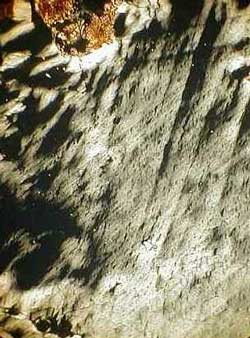 Fig. 3. Photomicrograph of strongly shocked quartz from the Rubielos de la Cérida basin.
Fig. 3. Photomicrograph of strongly shocked quartz from the Rubielos de la Cérida basin.
In a paper with more than 40 photographs and photomicrographs recently published by the Geological Museum in Barcelona (Spain) (see References), a comprehensive progress report on Azuara and Rubielos de la Cérida as the currently most prominent terrestrial doublet impact structure is given.
Despite the clear impact evidence, some aspects of the morphological signature of the Rubielos de la Cérida structure remained a worry. In the north and in the west, the structure is morphologically well defined to display a rim, a depression and a central uplift as is expected for a complex impact structure (Fig. 2). The morphological contours, however, become diffuse and leave a circular symmetry towards the east and the south. (The hilly terrain adjoining the central uplift in the northeast must not confuse, because it is built up of post-impact younger sediments.) In the beginning of a more detailed investigation of the Rubielos de la Cérida structure, we considered this morphology the probable result of a later tectonic overprint. This interpretation became questionable when we extended our field studies to the eastern and southern poorly defined rim regions of the Rubielos de la Cérida structure. Unexpectedly, we found more impact shock features in autochthonous rocks too strong as to have originated from the Azuara and/or Rubielos de la Cérida impacts. In the east, these finds focused on a nearly perfectly circular ring structure formed by steeply dipping beds. The diameter of this structure amounts to about 12 km, and it is called the Torrecilla ring or the Torrecilla impact structure (Fig. 2). The ring is suggested to have formed in the Azuara/Rubielos de la Cérida impact event by a separate projectile resulting in a morphological overlap east of the Rubielos de la Cérida central uplift.
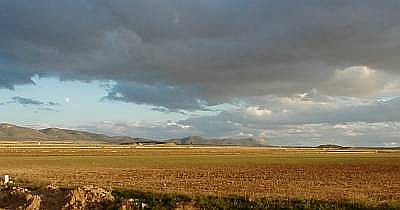
Fig. 4. Part of the central uplift chain emerging from the Rubielos de la Cérida impact basin.
In the south, there is another explanation for the untypical morphology. Actually, Rubielos de la Cérida is not a circular impact structure but forms the northern end of an elongated basin (Fig. 2). Its rims are running roughly in the north-south direction, and also the Rubielos de la Cérida central uplift extends to the south in the form of a mountain chain more or less symmetrical to the rims of the elongated basin (Fig. 2, Fig. 4). This peculiar continuation of both the Rubielos de la Cérida central uplift and basin is closely connected with the omnipresent occurrence of well-known impact features in rocks already documented in the original Rubielos de la Cérida impact structure. The impact evidence comprises structural features, abundant monomictic and polymictic breccias and breccia dikes, extensive megabreccias and petrographical significance in the form of impact glass and shock metamorphism.
As impressive structural signature, we show in Fig.5 a small part of the outcrop only recently produced by a new road cut through the rim fairly near the southern end of the elongated basin c. 20 km northeast of the town of Teruel. The outcrop of several 100 m length provides insight in voluminous drastically fractured and brecciated Buntsandstein and Muschelkalk rock units. As shown in Fig. 5, large-scale flow texture can be observed in the normally hard, now completely shattered rocks, Muschelkalk lens-shaped megablocks are floating within Buntsandstein material, and a prominent terraced faulting occurs. Within the heavily destroyed Triassic layers, large friction planes show intense slickensides and mirror polish (not seen in Fig. 5), and interleaved vesicular and foamy white material probably is crystallized carbonate melt from strong frictional heating of Muschelkalk carbonate. These features covering an area of uninterruptedly at least several hundreds of meters and similarly met in many places of the central-uplift chain and in the basin rims (Fig.6), cannot be explained by normal geologic, tectonic processes. In the cratering process of a very large impact, however, exactly such a scenario is to be expected and easily understood considering the giant rock movements during the excavation of the primary crater and the subsequent collapse of the transient crater in the modification stage. These movements under very high pressures may act so rapidly that the resulting friction temperatures are enough to transform the involved rocks into pure melt glass. We made such a peculiar find roughly 10 km northwest of the town of Teruel in the most southerly part of the central-uplift chain. In part, the glass seems to be completely homogenized suggesting temperatures in excess of 2,000°C (D. Griscom, pers. comm.).
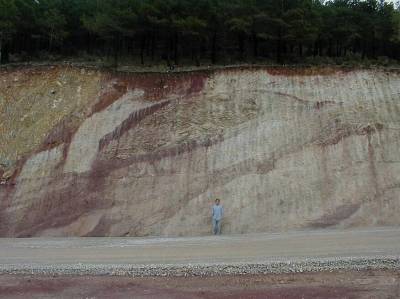
Fig. 5. The crater rim in the southern part of the impact chain.
Impact structures showing deviation from a circular symmetry may result from a very low-angle oblique impact or from a post-impact tectonic deformation (as is the case with, e.g., the large Sudbury impact structure). The latter can in this case be excluded, and a low-angle trajectory of the projectile conflicts with the circular shape of the Azuara structure and the Torrecilla ring as obvious companions to Rubielos de la Cérida. Therefore, the formation of the 80 km long basin by a pile of projectiles is rather probable. They caused several individual central-uplift craters more or less strung together morphologically and structurally. Such an uninterrupted crater chain, additionally blown up by the Azuara and Torrecilla structures, is so far unique among terrestrial impact structures.
Because of advanced weathering, the impact melt rocks found so far do not allow for a reliable absolute radiometric dating. Therefore, the most striking evidence for a synchronous multiple impact of Azuara, Torrecilla, and the Rubielos de la Cérida crater chain is provided by the stratigraphic layering of an impact suevite breccia. Extending from the northern part of the Azuara structure up to the southern part of the crater chain near the town of Teruel, this peculiar breccia displaying shock effects and melt clasts (Fig.7) is regularly found at the base of the post-impact (and post-Alpidic) undisturbed Upper Tertiary rocks. The up to 20 m thick horizontally bedded breccia layer always contacts the older Mesozoic folded rocks and is more or less meshed with them without any soil formation. The uniformity of this polymict breccia and its fixed stratigraphic position found in a region of the size of roughly 120 km strongly suggests a single phase of the brecciation and deposition, which is typical for a large impact but not at all expected for “normal” geologic processes.
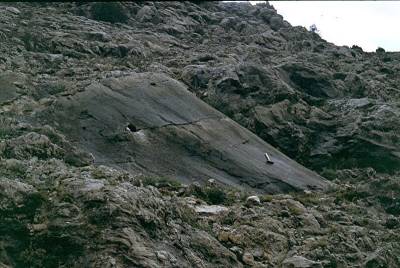
Fig. 6. Megabreccia and polished friction plane in the southern part of the central-uplift chain.
The impact event on the Iberian Peninsula may have been even more spectacular. Three enigmatic deposits (A, B, C in Fig.1) located more than 200 km northwest and northeast of the Azuara structure attract attention, because they show the typical features of impact ejecta deposits, and because their stratigraphic age may be related with the age of the Azuara/Rubielos de la Cérida impact event. All three deposits are composed of strongly plastically deformed clasts in an unconsolidated sandy matrix (Fig. 8). The clasts show heavy striations, imprints, penetration marks and rotated fractures very similar to deformations known from the Azuara/Rubielos de la Cérida ejecta and described also for the Ries crater (Germany) impact ejecta and the Chicxulub impact ejecta in Belize. Abundant moderate shock effects are observed to occur in silicate clasts that contribute to the diamictite deposits B and C (Fig.1). The age is Upper Eocene or younger for deposit A, post-Cretaceous for deposit B, and Upper Eocene or Oligocene for deposit C. Because the diamictites are in each case composed of local material, an emplacement as distant ejecta from the Azuara/Rubielos de la Cérida structures can be excluded. However, local candidates for possible impact craters are not known so far. This may be explained by a tectonic overprint, or they may be buried beneath post-impact young sediments. A systematic search is outstanding. However, the obvious impact signature of the three deposits and the conspicuous age relations with the Azuara/Rubielos de la Cérida impacts suggest that the multiple impact affected an even larger area sized of the order of at least 300 km. Thus, Azuara – Rubielos de la Cérida may in the future turn out to be important for further studies on the disruption of asteroids and multiple (cometary?) impacts on Earth and other planets.
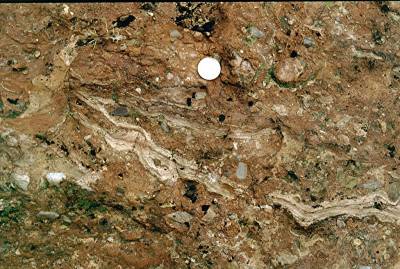
Fig.7. Impact breccia (suevite) exposed in the southern part of the central-uplift chain.
The here proposed large multiple impact event and its age direct attention also to the end-Eocene (38 Ma) mass extinction and the debated possible relation with large impacts, similar to the Cretaceous/Tertiary (K/T) boundary extinction related with the giant Chicxulub impact. As for the end-Eocene mass extinction, the large Popigai impact structure in Russia and the Chesapeake crater in the United States have so far been proposed as possible “smoking guns” of the event. The northern Spain multiple impact could be a further candidate because of its size and the more than 10 km thick sedimentary target. At the time of the impact, a high proportion of this target consisted of carbonate rocks and probably also evaporite (gypsum) layers. Such target rocks in a giant impact cratering process have been suggested to be important in triggering global climate changes.
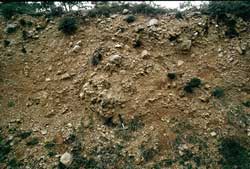
Fig. 8. Probable impact ejecta near Peñacerrada (location B in Fig. 1).
- Fakultät für Geowissenschaften der Universität Würzburg, Pleicherwall 1, D-97070 Würzburg, Germany
- Institut für Mineralogie der Universität Würzburg, Am Hubland, D-97074 Würzburg, Germany
- IES Giola, Llinars del Vallès. Barcelona-08450, Spain
- Am Judengarten 23, 97204 Höchberg, Germany
References
Because of the limited space, only a few references are given here. A comprehensive list may be ordered from the corresponding author (kord@ernstson.de).
Ernstson, K., Hammann, W., Fiebag, J., Graup, G. (1985): Evidence of an impact origin for the Azuara structure (Spain). Earth Planet. Sci. Lett., 74, 361-370.
Ernstson, K. & Claudin, F. (1990): Perlada Formation (Eastern Iberian
Chains, NE Spain): ejecta of the Azuara impact structure. N. Jb. Geol. Paläont. Mh., 1990, 581-599.
Ernstson, K. & Fiebag, J. (1992): The Azuara impact structure (Spain): new insights from geophysical and geological investigations. Geol. Rundschau, 81, 403-427.
Melosh,H.J. and Schenk, P. (1993): Split comets and the origin of crater chains on Ganymede and Calisto, Nature 365, 731-733.
Bottke, W.F., Richardson, D.C. and Love, S.G. (1997) Note: Can tidal disruption of asteroids make crater chains on the Earth and Moon? Icarus 126, 470-474.
Richardson, D.C., Bottke, W.F.and Love, S.G. (1998): Tidal distortion and disruption of Earth-crossing asteroids. Icarus 134, 47-76.
Spray, J.G., Kelley, S.P. and Rowley, D.B. (1998): Evidence for a late
Triassic multiple impact event on Earth. Nature 392, 171-173.
Ocampo, A.C., Pope, K.O. and Fischer, A.G. (1997): Carbonate ejecta from the Chixculub crater: evidence for ablation and particle interactions under high temperatures and pressures. Lunar Planet. Sci. Conf., XXVIII, 1035 – 1036.
Hradil, K., Schüssler, U., Ernstson, K. (2001): Silicate, phosphate and carbonate melts as indicators for an impact-related high-temperature influence on sedimentary rocks of the Rubielos de la Cérida structure, Spain. in „Impact markers in the stratigraphic record“, 6th ESF-IMPACT workshop, abstract book, Granada, 49-50.
Ernstson, K., Rampino, M.R. and Hiltl, M. (2001) Cratered cobbles in Triassic Buntsandstein conglomerates in northeastern Spain: An indicator of shock deformation in the vicinity of large impacts. Geology 29, 11-14.
Ernstson, K., Claudin, F., Schüssler, U., Hradil, K. (2002): The mid-Tertiary Azuara and Rubielos de la Cérida paired impact structures (Spain). Treballs Museu de Geologia de Barcelona 11, 1-62.
Unusual melt rocks from meteorite impact
by Kord Ernstson1, Uli Schüssler2, Ferran Claudin3 and Michael Hiltl4
Abstract. – We show and discuss unusual impact melt rocks from the sedimentary target of the Azuara/Rubielos de la Cérida multiple impact in Spain: a silicate melt rock originating from the melting of shale, a carbonate-phosphate melt rock showing liquid immiscibility of carbonate and phosphate melt, carbonate and sulfate melt rocks, a carbonate-psilomelane melt rock, and amorphous carbon particles in a microbreccia probably being carbon glass that has originated from the shock melting of Cretaceous coal.
1.Fakultät für Geowissenschaften der Universität Würzburg, Pleicherwall 1, D-97070 Würzburg, Germany. kord@ernstson.de
2. Institut für Mineralogie der Universität Würzburg, Am Hubland, D-97074 Würzburg, Germany. uli.schuessler@mail.uni-wuerzburg.de
3. IES Giola, Llinars del Vallès. Barcelona-08450, Spain. fclaudin@pie.xtec.es
4. Carl Zeiss NTS GmbH, Carl-Zeiss-Str. 56, D-73447 Oberkochen, Germany. MHiltl@gmx.de
Introduction
By definition [1], an impact melt rock is a crystalline rock that, in a meteorite impact event, has solidified from shock-produced impact melt and that contains variable amounts of rock fragments. On the other hand, shocked impact rocks that contain impact melt particles in a clastic matrix (clastic matrix = matrix of fragmental rock) are termed suevites or suevite breccias. Both impact melt rocks and suevites are well known from many impact structures which were formed in targets of crystalline basement rocks or in mixed targets of sedimentary rocks overlying crystalline basement rocks. In these craters, melt rocks and suevites may form more or less thick layers (melt sheets, suevite layers) that can normally be easily recognized (e.g., in the Mistastin, Vredefort, Lappajärvi, Sääksjärvi, Ries, Mien, Rochechouart impact structures, and in many others) and that are the source for collectors and collections of impactites. Impact structures in purely sedimentary targets, to the contrary, in general lack these impact melt rock and suevite layers, which has especially been pointed out by Kieffer & Simmonds [2]. They suggest that in sedimentary targets the high amount of volatiles (water vapor from shocked porous rocks, carbon dioxide from shocked carbonate rocks) prevents the formation of coherent melt masses. Instead, the shock-produced impact melt is finely dispersed by the volatiles to form microscopic glass particles only. In our opinion, there may be an additional reason for the apparent lack of melt rocks and suevites in impact structures in sedimentary targets. The rocks do exist, but they are not recognized as such. This may especially happen when the sedimentary target is composed to a large extent of carbonate rocks (limestones, dolomites) or/and evaporites (gypsum, anhydrite, chlorides). Carbonate rocks, e.g., are known to melt like other rocks, but the produced carbonate melt cannot be chilled to form glass, because it very rapidly crystallizes to form again a carbonate rock. Since the textures may show rough similarities, these crystallized carbonate melts may on cursory inspection be easily confused with normal limestones or soil formations as, e.g., calcrete (caliche). Gypsum, exposed to high shock-related temperatures, is transferred to anhydrite by loss of crystal water. Anhydrite may melt under complex conditions [3], but probably the melt upon cooling and in contact with water will crystallize again to gypsum. Likewise, during impacts in sedimentary, i.e. volatile-rich targets with variable lithology, high shock pressures and temperatures may lead to further complex melting and cooling processes and, in the end, to melt rocks of very peculiar composition and texture.
Here, we report on some unusual melt-bearing rocks and impact melt rocks that were produced in the Mid-Tertiary multiple impact on the Iberian Peninsula [, 4, 5, 6, 7]. The multiple impact comprises the 35-40 km-diameter Azuara structure, the Rubielos de la Cérida 40 km x 80 km impact crater chain, and suspected additional craters of smaller size. Exceptional with regard to the large crater diameters, the cosmic projectiles impacted a purely sedimentary target of roughly 10 km thickness. The unusual melt rocks to be described are related with the sedimentary target and partly with the contribution of carbonate and evaporite rocks. The suevite breccias abundantly exposed in the Azuara/Rubielos de la Cérida impact region [4, 6] will not be considered here.
Silicate melt rock
Many of the unusual melt rocks are intermixed in a polymictic megabreccia exposed along the road between the junction to Cutanda and the village of Barrachina in the Rubielos de la Cérida impact basin [6]. The polymictic megabreccia is assumed to have been formed in the impact cratering process by the deformation and intermixing of large rock complexes of different lithology (Fig. 1)

 Fig. 1. Two aspects of the megabreccia in the Rubielos de la Cérida impact basin. To the left: several blocks of different lithology in contact. A microbreccia exhibiting apophyses has been injected into the middle block. To the right: A body of silicate melt rock (the light ribbon) embedded in the megabreccia.
Fig. 1. Two aspects of the megabreccia in the Rubielos de la Cérida impact basin. To the left: several blocks of different lithology in contact. A microbreccia exhibiting apophyses has been injected into the middle block. To the right: A body of silicate melt rock (the light ribbon) embedded in the megabreccia.
The silicate melt rocks occur as porous, fine-grained, whitish to yellowish blocks of variable size in a range of decimeters up to 1 – 2 meters (Fig. 1B), and they consist mainly of a milky white glass which forms tiny spheroids and lens-shaped bodies (Figs. 2, 3).
 Fig. 2. The glass of the silicate impact melt rock under the microscope. The field is 15 mm wide.
Fig. 2. The glass of the silicate impact melt rock under the microscope. The field is 15 mm wide.

 Fig. 3. SEM images of the impact glass.
Fig. 3. SEM images of the impact glass.
The glass is estimated to make up more than 90% of the rock. This is typically shown by a distinct amorphous glass “hump“ occurring in x-ray powder diffractograms. Some relics of plagioclase, quartz and mica within the glass masses are indicated by respective reflection peaks. Grains of quartz, twinned plagioclase and occasional mica are also found in thin sections of the glass matrix. In rare cases, the quartz fragments show planar deformation features (PDFs) and, more frequently, multiple sets of planar fractures (PFs), both indicative of impact shock. Feldspar grains show isotropization in the form of multiple sets of isotropic twinning lamellae and isotropic spots (diaplectic crystals), and they have sometimes become almost completely isotropic (diaplectic glass), indicating shock peak pressures of the order of 30 GPa (300 kbar). From a microprobe geochemical analysis we conclude that the glass has originated from the melting of shales very common in the sedimentary target. An interpretation of the glass to be volcanic ash as claimed by local geologists and, e.g., M. R. Rampino (written communication), can basically be excluded.
Carbonate-phosphate melt rock
A very special kind of former melt was found also within the Barrachina megabreccia of the Rubielos de la Cérida impact basin [5]. The whitish melt rock (Fig. 4) is composed of irregular spheroids up to 4 mm in size, which are embedded within an
 Fig. 4. The white carbonate-phosphate melt rock embedded in a breccia composed of marl and limestone.
Fig. 4. The white carbonate-phosphate melt rock embedded in a breccia composed of marl and limestone.
 Fig. 5. The carbonate-phosphate melt rock in close-up. Calcitic amoebic bodies are floating in phosphate glass (white). The field is 30 mm wide.
Fig. 5. The carbonate-phosphate melt rock in close-up. Calcitic amoebic bodies are floating in phosphate glass (white). The field is 30 mm wide.
extremely fine-grained glass matrix (Fig. 5). In thin section (Fig. 6) and SEM image (Fig. 7), the spheroids turn out to be globular to amoeba-like calcite particles. They are coarse-grained in their centers and display decreasing grain size towards the rims. Regularly, a perpendicular grain orientation towards the rims is observed. The contact with the matrix is extremely fine-grained.
 Fig. 6. Photomicrograph of the carbonate-phosphate melt rock. The amoebae-like bodies composed of calcite crystals are surrounded by Ca-P glass that under crossed polarizers proves to be optically isotropic. Note the increasing size of the crystals towards the center of the calcitic bodies. Width of the field is 6 mm.
Fig. 6. Photomicrograph of the carbonate-phosphate melt rock. The amoebae-like bodies composed of calcite crystals are surrounded by Ca-P glass that under crossed polarizers proves to be optically isotropic. Note the increasing size of the crystals towards the center of the calcitic bodies. Width of the field is 6 mm.
 Fig. 7. SEM image of the contact between amoebic calcite and phosphate glass in the carbonate-phosphate melt rock.
Fig. 7. SEM image of the contact between amoebic calcite and phosphate glass in the carbonate-phosphate melt rock.
The glass matrix mainly consists of CaO and P2O5 with minor contents of F, S, Cl and NaO. Locally, a strong enrichment of Ba and S at the expense of the CaO and P2O5 content is observed. In part, the Ca-P glass is recrystallized to form apatite, as verified also by x-ray powder diffraction analysis. A similar melt rock has been reported for the suevite of the Ries crater. In the suevite, the calcite particles have identical structure and composition compared with the melt rocks of Barrachina and are interpreted as quench products of a carbonate melt [8]. Different from the Barrachina melt rocks, the matrix in the Ries samples is silicate glass as a result of carbonate-silicate liquid immiscibility. In our case, the melt rock displays a small-scaled immiscibility of coexisting former carbonate melt and phosphate melt.
Sulfate melt rock
In the Barrachina megabreccia in the Rubielos de la Cérida impact basin, white clasts are embedded (Fig. 8) that consist of highly porous material (dry-rock densities of only 1.4 g/cm³ were measured). Only a few rock fragments are interspersed (Fig. 9). Chemically, the white material is nearly pure CaSO4. In thin section, the matrix may show flow texture but is otherwise not resolved by the optical microscope. SEM images (Fig. 10) show a distinct vesicular texture obviously related with the high porosity. Mineral fragments, mostly quartz and feldspar, are partly strongly shocked (PDFs, diaplectic glass). Shock effects occur also in minerals of the interspersed rock fragments.
 Fig. 8. Block of probable sulfate melt rock embedded in the megabreccia.
Fig. 8. Block of probable sulfate melt rock embedded in the megabreccia.
 Fig. 9. Clast of highly porous calcium sulfate probably crystallized from a sulfate melt. Note the enclosed quartzite fragments.
Fig. 9. Clast of highly porous calcium sulfate probably crystallized from a sulfate melt. Note the enclosed quartzite fragments.

 Fig. 10. SEM images of the sawed surface of probable sulfate melt rock. Note the vesicular texture.
Fig. 10. SEM images of the sawed surface of probable sulfate melt rock. Note the vesicular texture.
Obviously, the CaSO4 material is not a chemical sediment (gypsum, anhydrite), and a pedogenic origin can clearly be excluded. With respect to the high porosity, the flow texture and the strong shock effects, we suggest the clasts to have formed by crystallization from a shock-produced sulfate melt. The melting point of anhydrite is 1,750 K, a temperature which must have been exceeded to produce the silicate melt in the Barrachina megabreccia (see above, and [6]). Crystallization from an anhydrite melt is also discussed for material in suevite breccias from the Chicxulub impact structure [9] and in impactites from the Haughton impact structure [10].
Carbonate melt rocks
Abundant relics of former carbonate melt are proposed to occur in the Azuara impact structure and the Rubielos de la Cérida companion impact basin [6]. They are found in the form of decimeter and meter-sized blocks, as dikes cutting sharply through the country rock (Fig. 10), and as highly porous, foamy and feathery material within brecciated rocks. As already mentioned, carbonate melt cannot be chilled to form glass, but rapidly crystallizes to carbonate again Therefore, the origin from a melt can only indirectly be suggested by the occurrence of skeletal, dendritic crystallites, vesicular texture and related features. Typical carbonate rocks which we interpret to have crystallized from a carbonate melt are shown in Figs. 11, 12 and 13.
 Fig. 11. A dike of highly porous carbonate melt rock cutting through Jurassic limestones.
Fig. 11. A dike of highly porous carbonate melt rock cutting through Jurassic limestones.
 Fig. 12. Highly vesicular skeletal carbonate rock probably originating from the decomposition and melting of a limestone or dolomite.
Fig. 12. Highly vesicular skeletal carbonate rock probably originating from the decomposition and melting of a limestone or dolomite.

Fig. 13. SEM images of the relics of carbonate melt. Note the vesicular felted texture (to the left) and the dendritic crystallites (to the right). SEM analyses establish calcium carbonate and traces of quartz.
Carbonate-psilomelane melt rock
The southwestern rim area of the Azuara impact structure is characterized by a variety of quite different impact breccia dikes. Close to the village of Monforte de Moyuela, an outcrop was found where autochthonous Muschelkalk dolomite is crosscut by a dike of dark material (Figs. 14, 15; UTM coordinates of the outcrop are 06 67 200/ 45 46 300; also see [11]).
 Fig. 14. A dike of carbonate-psilomelane melt rock cutting through Muschelkalk dolomite.
Fig. 14. A dike of carbonate-psilomelane melt rock cutting through Muschelkalk dolomite.
 Fig. 15. Section across the dike of carbonate-psilomelane melt rock (m) . d = dolomite host rock, c = seam of calcite grown perpendicular to the wall of the dike.
Fig. 15. Section across the dike of carbonate-psilomelane melt rock (m) . d = dolomite host rock, c = seam of calcite grown perpendicular to the wall of the dike.
 Fig. 16. Photomicrograph of the carbonate-phosphate melt rock. Note the many gas vesicles (gv). The field is 1 mm wide.
Fig. 16. Photomicrograph of the carbonate-phosphate melt rock. Note the many gas vesicles (gv). The field is 1 mm wide.
As shown by thin sections under the microscope, the dike consists of a light matrix of carbonate minerals, hosting a high amount of black spherical to amoebic particles (Fig. 16) which show gel-like layered structure in the reflective light. The rim (c in Fig. 15) towards the dolomite country rock (d in Fig. 15) is characterized by pure carbonate crystals having grown perpendicular to the wall of the dike. A typical feature of the dike is the high amount of gas vesicles (Fig. 16). The gel-structured black particles turned out to be ore minerals containing Mn and Ba as major elements beside highly variable amounts of light components like H2O. After HCl treatment and removal of the carbonate matrix of a black vein sample, the remnant in an x-ray powder diffractogram was identified as a very imperfectly crystallized psilomelane (a hydrated manganese oxide). At first glance the calcite-psilomelane composition of the dike may be explained by hydrothermal or weathering fluids having circulated through the rocks. Two features, however, do not really match this point of view:
— The very high amount of gas vesicles is totally uncommon for hydrothermal dikes and can only be explained by rapid melting-cooling processes with incomplete degassing of the melt.
— The growth of the calcite crystals (c in Fig. 15) perpendicular to the wall of the dike again clearly points to crystal growth from a melt, perpendicular to the cooling front. Similar calcite growth has been observed in amoebic carbonate particles embedded in phosphate or silicate glass matrix of suevite samples from the Rubielos de la Cérida and the Nördlinger Ries impact structures, respectively (see above, Carbonate-phosphate melt rock). This texture has been interpreted as the result of a quench crystallization from a carbonate melt. As a conclusion, the psilomelane-calcite dike turns out to be a former manganese-bearing carbonate melt which was injected into cracks at the crater floor and then rapidly cooled. Probably the psilomelane is secondary and formed by replacing a primary Mn mineral. Mn, partly in minable quantities, is not uncommon in the target rocks of the impact structure.
Melt rock from Almonacid de la Cuba
The peculiar rock shown in Fig. 17 is exposed near the village of Almonacid de la Cuba at the NE ring of the Azuara impact structure (UTM coordinates 6 84 300, 45 73 900) and is so far unique with respect to occurrence, composition and texture. A comparable rock is completely unknown in the stratigraphic record of northern Spain. Within a dense to porous and even foamy greyish carbonate matrix, components of snow-white color are embedded, which may be extremely vesicular as
 Fig. 17. Sawed surface of the Almonacid de la Cuba impactite.
Fig. 17. Sawed surface of the Almonacid de la Cuba impactite.
shown in the photograph (Fig. 17). The rock forms an extensive deposit, which has in detail been investigated by Tanja Katschorek [12]. From field work and petrographic analyses, she concludes that the deposit has resulted from an expanded, turbulent, and dilute flow by inclusion of considerable amounts of carbonate melt, similar to volcanic surges. The matrix may have solidified completely from a carbonate melt giving the rock the character of an impact melt rock [1].
Amorphous carbon in a microbreccia – solidified from a carbon melt?
In the Barrachina megabreccia referred to above, blocks of a fine-grained microbreccia (Fig. 1) are locally intercalated. The microbreccia consists of loosely cemented carbonate and, subordinate, quartz particles. Small black clasts measuring between 0.5 and 2 mm are widespread and striking. Two kinds of these black components can be distinguished. The first kind is ordinary charcoal which under the microscope shows the typical charcoal structure. The second kind of black particles is very hard, occurs in very irregular forms and has a surface gleaming like glass (Fig. 18). Qualitative microprobe element scans show the particles to be composed of carbon and oxygen as the only major components. Additional elements are Ca and S in varying concentrations. X-ray powder diffraction analysis of the particles resulted in diffractograms without any reflections, but showing a typical amorphous glass “hump“.
 Fig. 18. Particles of amorphous carbon in an unknown compound with oxygen. Scale bar 1 mm.
Fig. 18. Particles of amorphous carbon in an unknown compound with oxygen. Scale bar 1 mm.
 Fig. 19. SEM image of an amorphous carbon particle from the Rubielos de la Cérida microbreccia.
Fig. 19. SEM image of an amorphous carbon particle from the Rubielos de la Cérida microbreccia.
 Fig. 20. SEM image of a fracture surface of an amorphous carbon particle. Note the lancet markings typical of glass fracture.
Fig. 20. SEM image of a fracture surface of an amorphous carbon particle. Note the lancet markings typical of glass fracture.
Carbon in elemental form has repeatedly been described from impact structures [e.g., 13, 14]. As has been shown by hypervelocity impact experiments [13], a possible source of elemental carbon is carbonate rocks, which could also apply to the carbonate-rich target of the Rubielos de la Cérida structure. As a further possibility and taking into account the glass-like appearance (Figs. 18, 19, 20) and the irregular shapes of the particles, the amorphous carbon may be quenched carbon melt from extremely shocked coal of the Cretaceous Utrillas lignite deposits in the target. Carbon melts at temperatures of roughly 3,800 K which, in a hypervelocity meteorite impact, is exceeded at highest shock levels. From stratigraphical considerations, the lignite layers could have been deposited in the very center of the Rubielos de la Cérida structure. The role of remarkable contents of oxygen detected in the carbon particles is still unclear. Compounds of carbon and oxygen do not occur in solid state. We propose the possibility that the carbon may occur as fullerenes which are able to trap gases within their cages. Fullerenes have been reported in relation with the Sudbury impact structure and the Permian-Triassic boundary [15, 16].
Conclusions
We have presented and discussed seven different rocks from the area of the Azuara/Rubielos de la Cérida impact. They have either been solidified from a melt, or they contain glass that has been quenched from a melt. However, not all aspects of their formation are completely understood which is related with the generally poor knowledge of the formation of carbonate and sulfate melts in the impact cratering process. The rocks prove to be rather inconspicuous and unprepossessing, and for rock hunters they may be the Ugly Ducklings among the impactites. That is why they probably have never been recognized by geologists previous to the discovery of the large impact event. Without closer inspection, the mostly whitish, yellowish and greyish rocks have either not been given further consideration, or they have been confused with common carbonate rocks or soil formations like calcrete (caliche), and dike-like occurrences of melt rocks and melt-bearing rocks were regarded as karst features, e.g., by local geologists. From our experiences in the Azuara and Rubielos de la Cérida impact area with rocks originating from the melting of sediments we suggest that in impact structures in sedimentary i.e. volatile-rich targets, there may generally be more impact melt rocks than previously assumed. In impact research, this idea gains acceptance only hesitantly (see e.g., [17].
References
[1] IUGS Subcommission on the Systematics of Metamorphic Rocks, Study Group for Impactites.
[2] Kieffer, S. W. and Simonds, C. S. (1980). The role of volatiles and lithology in the impact cratering process. Review of Geophys. and Space Physics, 18: 143-181.
[3] Ivanov, B.A., Langenhorst, F., Deutsch, A. and Hornemann U. (2003). Theoretical constraints on shock melting and decomposition of anhydrite. Bayerisches Geoinstitut, Bayreuth, Annunal Report 2003.
[4] Ernstson, K. and Fiebag, J. 1992. The Azuara impact structure: New insights from geophysical and geological investigations. Geol. Rundschau, 81: 403-427.
[5] Ernstson, K., Schüssler, U., Claudin, F. & Ernstson, T. (2003). An impact crater chain in northern Spain. Meteorite, 9, no 3, 35-39.
[6] Ernstson, K., Claudin, F., Schüssler, U. & Hradil, K. (2002). The mid-Tertiary Azuara and Rubielos de la Cérida paired impact structures (Spain).Treballs del Museu de Geologia de Barcelona. 11: 5-65.
[7] Ernstson, K., Claudin, F., Schüssler, U., Anguita, F. and Ernstson, T. (2001). Impact melt rocks, shock metamorphism, and structural features in the Rubielos de la Cérida structure, Spain: evidence for a companion to the Azuara impact structure, in: Impact markers in the stratigraphic record, 6th ESF-IMPACT workshop Granada, abstract book: 23-24.
[8] Graup, G. (1999). Carbonate-silicate liquid immiscibility upon impact melting: Ries Crater, Germany. Meteoritics Planet. Sci., 34: 425-438.
[9] Claeys, P., Heuschkel, S, Lounejeva-Baturina, E., Sanchez-Rubio, G., and Stöffler, D. (2003). The suevite of drill hole Yucatàn 6 in the Chicxulub impact crater. Meteor. Planet. Sci., 38, 1299-1317.
[10] Osinski, G.R. and Spray, J.G. (2003). Evidence for the shock melting of sulfates from the Haughton impact structure, Canada. Abstract, 6th Annual Meteoritical Society Meeting.
[11] Schüssler, U., Ernstson, T., and Ernstson, K. (2004). Impact-induced carbonate-psilomelane vein in the Azuara structure of northeastern Spain. www.uni-wuerzburg.de/mineralogie/schuessler/Monforte-vein.pdf.
[12] Katschorek, T. (1990). Geological investigations at the northern rim of the Azuara structure (NE Spain). Diploma thesis (in German), University of Würzburg.
[13] Bunch, T. E., Becker, L., Schultz, P. H. and Wolbach, W. S. (1997). New potential sources for Black Onaping carbon. Large Meteorite Impacts and Planetary Evolution, 30. 8. – 5. 9. 1997, Sudbury, abstracts.
[14] Heymann, D. and Dressler, B. O. 1997. Origin of carbonaceous matter in rocks from the Whitewater Group of the Sudbury structure. Large Meteorite Impacts and Planetary Evolution, 30. 8. – 5. 9. 1997, Sudbury, abstracts.
[15] Becker, L., Poreda, R. J., Bada, J. L. (1996). Extraterrestrial Helium Trapped in Fullerenes in the Sudbury Impact Structure. Science, 272: 249-252.
[16] Becker, L., Poreda, R. J., Hunt, A. G., Bunch, T. E. and Rampino, M. R. (2001). Impact event at the Permian-Triassic boundary: evidence from extraterrestrial noble gases in fullerenes. Science, 291: 1530 – 1533.
[17] G. R. Osinski and H. J. Melosh (2004). Impactites on Mars: What should we expect and what is the role of volatiles? Second Conference on Early Mars, Jackson Hole, abstract.
The Azuara impact event in the Spanish TV
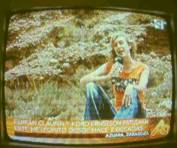
On June 9, 2006, TV Aragón presented a film report on the exhibition about the Azuara impact event. Settings of the film were
a geological exposure in the field and the impact exhibition in the town hall of Azuara both together with Ferran Claudin and Kord Ernstson.
a study in the university of Zaragoza with a computer monitor and a geological map presented by A. L. Cortés.
The reporter clearly presented both positions of the controversy underlined especially by the following subtitles in the TV:
Ferran Claudin and Kord Ernstson are working on the impact since two decades.
The impactor could have been a comet that hit the ground at a velocity between 20 and 70 km/s.
The exhibition in the Azuara town hall can also be visited in the Internet
And
The university of Zaragoza denies the existence of the impact of a meteorite.
Comment by F. Claudin & K. Ernstson
Although it would have been possible to film a joint discussion in the field or/and in the Azuara exhibition, A. L. Cortés preferred to avoid that (like with the inauguration of the Azuara impact exhibition, when the Zaragoza geologists had explicitly been invited but nobody came). Thus the Zaragoza geologists are practicing what they have been doing since 20 years: to refuse any joint field campaigns with the visit and discussion of impact outcrops as well as to refuse joint studies of Azuara shock effects (PDFs, shock melt, diaplectic glass etc) under the microscope.
Instead they are judging about the impact event from their studies extracting geological maps from their bookcases and regarding computer monitors. In the course of the 2001 IMPACT workshop in Granada they originally had the brilliant idea to discuss on the Azuara impact by presenting own videos of exposures. When we refused and in the end a field trip came about, they solely aimed to completely confuse the foreign participants and to utilize their very poor knowledge of the regional geology (see https://www.impact-structures.com/spain/workshop.htm).
Thus, presenting A. L. Cortés in his study was a nice documentation by TV Aragón about Zaragoza geologists’ considering the impact phenomena.
We would like to add some further comments on A. L. Cortés’ TV contribution. Neither Cortés nor any other geologists from the Zaragoza university have ever worked on meteorite impacts, and only recently a paleontologist from this university remarked that he cannot understand his geological colleagues who are discussing on impacts without any knowledge of this matter.
In the TV report, Cortés repeats the same old story that the Spanish regional geologists have made proper mapping and many thin-sections and that all impact evidences can be explained by normal geological processes. Cortés mentions once more the impact megabreccia as apparently exposed all over Spain and keeps completely quiet about his permanently confusing the facies of the Cortés de Tajuña Fm. with the impact megabreccia (see https://www.impact-structures.com/spain/controversy/megabrecha.htm ).
The geological mapping of Cortés and his colleagues is not as proper as he claims, and this is especially demonstrated by the large-scale erroneous mappings near Teruel or near Visiedo in the Rubielos de la Cérida impact basin. Near Visiedo, very large areas of outcropping Permotriassic sandstones and quartzites have been confused with Malmian limestones (!) both on the geological maps of 1 : 50 000 and 1 : 200 000 scales. The erroneous mapping near Teruel is especially highlighting, because Teruel has explicitly been mentioned by Cortés in the TV film. Near Teruel, the geological map shows an extremely curious setting. A large Buntsandstein complex of the size of many square kilometers is completely surrounded by and mapped in direct contact to the Rhaetian-Liassic (Cortés de Tajuña Fm.). The complete sequence of Muschelkalk and Keuper layers, several 100 meters thick, is absolutely missing on the geological map although otherwise always existent all over northern Spain. What’s the matter?
Going to the field, the Rhaetian-Liassic, mapped in direct contact to the Buntsandstein Fm. (Permotriassic), actually proves to be Muschelkalk limestones and dolomites and thus exhibiting the quite normal stratigraphic setting of Muschelkalk overlying Buntsandstein.
Why could the Muschelkalk have been completely confused with the Rhaetian-Liassic ? The reason is simple: The Buntsandstein complex and the surrounding Muschelkalk rocks are exposed exactly in the rim zone of the large Rubielos de la Cérida impact basin, where the Muschelkalk in the excavation and modification stage of impact cratering has been transformed to a giant megabreccia exposed over kilometers and kilometers (see https://www.impact-structures.com/Archiv/archiv.html) . And because evidently, for Cortés and his mapping colleagues the equation
extensive breccias = Cortés de Tajuña -Formation = Rhaeto-liassic age
automatically holds, the unbelievable confusion found its way to the geological maps.
So much about A. L. Cortés and his TV contribution about geological mapping and the “non-existing” impact.
The Sirente craters (Italy): On the possible origin of geomagnetic anomalies (Ormö et al. 2007)
by Werner Mayer1, Ferran Claudin2 & Kord Ernstson3
Abstract. – Abundant finds of exploded ordnance in the Sirente crater field suggest that geomagnetic anomalies measured in connection with some of the craters may have a simple explanation. Without a consideration of these iron-metallic fragments and of possible unexploded ordnance, any conclusions with respect to the crater formation based on magnetometer surveys only, are questionable.
Introduction
The Sirente crater field in Italy consists of about 30 depressions with a main rimmed 120 m-diameter crater. The origin of the craters is disputed and has been ascribed to meteorite impact (Ormö 2002), to mud volcanic processes (Stoppa 2006) and to anthropogenic activities (Speranza et al. 2004). So far, no impact features like meteoritic material, geochemical signature or shock metamorphism have been identified (Ormö et al. 2006). According to Oril et al. (2007) seismic data from the main crater support the meteorite impact interpretation but do not exclude other hypotheses.
In a recent article printed in the Meteoritics & Planetary Sciencejournal (editorial handling – John Spray), Ormö et al. (2007) are reporting on a magnetometer survey in the Sirente crater field. From a modeling of magnetic anomalies measured over some of the smaller depressions they reason uplifted crater rims and buried meteorites. Here, we report on a field trip to the Sirente crater area revealing that measured magnetic anomalies may at least partly be related with exploded and/or unexploded ordnance.
Field evidence
On April 12, 2004, one of the authors (W. M.) together with Christian Siegl visited the Sirente crater field (Fig. 1). The field trip was initiated after the discovery of the Holocene Chiemgau impact strewn field in Southeastern Germany (Rappenglück et al. 2004, Schüssler et al. 2005, CIRT 2006, and others) with the intention of comparing both locations.
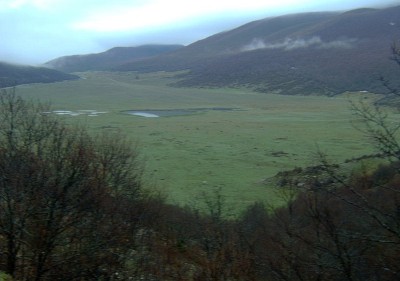
Fig. 1. The Sirente crater field in Italy. Photo W. Mayer.
In the course of a close field inspection guided among others by the hope of finding meteorites, metallic fragments could actually be sampled in great quantities (Fig. 2), and a concentration was observed in the environs of the smaller depressions in the north and northeast of the main structure. Here, many iron-metallic fragments were found even at the floor of smaller craters. On extrapolation of the finds, several thousands of iron fragments or a mass of estimated one ton at least are expected to exist in the Sirente field.
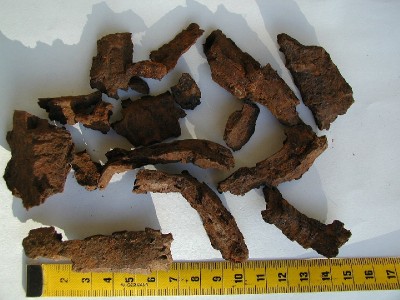
Fig. 2. Exploded ordnance iron splinters from the Sirente crater field. Photo W. Mayer.
Rapidly, it became explicit that the sampled iron splinters, typically shown in Fig. 2, were fragments of exploded ordnance like bombs and grenades.
Discussion and conclusions
The find of abundant fragments of exploded ordnance has implications and poses some questions. In the first place and disregarding for the moment the dating of some craters to ~ 500 A.D. (Ormö et al. 2006), we pose the question whether some of the smaller craters (with diameters between 1.5 and 20 m and a maximum depth of about 2 m) could have originated from military operations implying bombing and, therefore, are simple explosion craters. On the other hand, in areas of exploded ordnance there is in general also unexploded ordnance to be encountered. It is well known that, e.g., in World War II roughly 10 – 20% of released bombs survived unexploded in the ground. In Italy, more than 1 million bombs were air-dropped by the Allied Forces, and at least 10 % did not explode (Furlanello & Merler 2001). In most cases they are leaving only small flat depressions to be possibly seen in aerial photographs. In the case of the Sirente ground of carbonate mud, the penetration of an unexploded bomb could perhaps have produced a somewhat larger depression although the hole of entry is in general much smaller (see, e.g., War Department 1943). The depth of penetration of blind shells has frequently been considered. For a 250 kg sized bomb, the depth has been found to be 5 m on average and 12 m maximum, and for a smaller, 50 kg sized bomb the respective numbers are 3.5 m and slightly less than 12 m (War Department 1943). In a soft muddy ground like in the Sirente area, a penetration depth at the upper limit can be expected.
Both exploded and unexploded ordnance are known to be related with magnetic anomalies, and magnetometer surveys by total-field and gradiometer soundings are basic in the detection of unexploded ordnance. A typical bomb magnetic anomaly is shown in Fig. 3., while Fig. 4 exhibits a magnetic map of a field full of exploded ordnance.
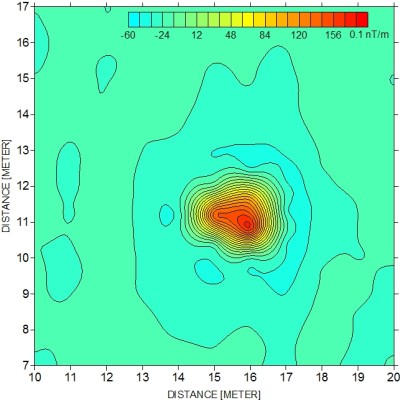
Fig. 3. Typical WW II blind shell geomagnetic anomaly. Vertical gradient of the geomagnetic vertical field intensity.
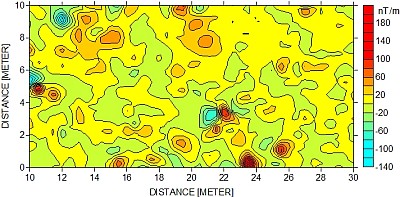
Fig. 4. Geomagnetic map of exploded-ordnance anomalies. Vertical gradient of the geomagnetic vertical field intensity.
Summarizing, the find of exploded ordnance in the Sirente area points to military activities in the past, and a historical inquiry could possibly provide some insight. As exploded ordnance is frequently accompanied by unexploded ordnance, it cannot be excluded that some magnetic anomalies measured and modeled by Ormö et al. (2007) originate from deeply penetrated bombs. In this case and confusing bomb anomalies with supposed anomalies from meteorites, attempts to recover them (especially when a drilling into an object is to be executed [Ormö et al. 2007]) could be a dangerous endeavor.
This is one side of the coin. The other side concerns the subject of the article (Ormö et al. 2007) that is the discussion of the impact origin for the Sirente crater field and the alleged substantiation by the results of the geomagnetic survey.
To avoid any misunderstanding we explicitly state that we don’t intend to knock the impact hypothesis on the head. To the contrary, an impact origin for at least the largest crater seems to be much plausible. We are also aware of the radiocarbon and TL dating (Ormö et al. 2006) probably excluding an origin from military operations for at least those structures. However, as long as the magnetic survey completely ignores the abundant exploded ordnance and the possibility of anthropogenic magnetic causative bodies in the ground, the article by Ormö et al. (2007) and the conclusions therein are without any value. This yet again demonstrates that a peer review doesn’t prove a recipe for good science.
Acknowledgements. – We thank Dr. Hans-Georg Carls, Luftbilddatenbank, Estenfeld, and Frank Dietsch, Ebinger Prüf- und Ortungstechnik GmbH, Köln, for data and valuable information.
References
CIRT – Chiemgau Impact Research Team (2006): The Holocene Tüttensee meteorite impact crater in southeast Germany. –http://www.chiemgau-impact.com/artikel2.pdf.
Furlanello, C. & Merler, S. (2001): Finding unexploded bombs from WWII. Automatic mapping of unexploded air-dropped ordnances: risk map for the Adige valley. In International Conference on Machine Learning. Workshop Session on Spatio-Temporal Methods. Williamstown MA. 28 June/July 2001.
OriI, G.G., Rossi,A.P., Komatsu, G., Ormö, J., M. Rainone, M., Signanini, P., Torrese, P., Sammartino, P., Madonna, R., Baliva, A. & Di Achille, G. (2007): Seismic data from the main crater of the proposed Sirente meteorite crater field (Central Italy). – Lunar and Planetary Science XXXVIII, 1092.pdf
Ormö, J., Rossi, A.P. & Komatsu, G. (2002): The Sirente crater field, Italy. – Meteoritics and Planetary Science, 37, 1507-1523.
Ormö, J., Koeberl, C., Rossi, A.P. & Komatsu, G. (2006): Geological and geochemical data from the proposed Sirente crater field: New age dating and evidence for heating of target. – Meteoritics and Planetary Science, 41, 1331-1345.
Ormö, J., Gomez-Ortiz, D., McGuire, P.C., Henkel, H., Komatsu, G. & Rossi, A.P. (2007): Magnetometer survey of the proposed Sirente meteorite crater field, central Italy: Evidence for uplifted crater rims and buried meteorites. – Meteoritics and Planetary Science, 42, 211-222.
Rappenglück M.A., Ernstson, K. Mayer, Beer, R., Benske G., Siegl, C., Sporn, R., Bliemetsrieder, T. & Schüssler, U. (2004): The Chiemgau impact event in the Celtic Period: evidence of a crater strewnfield and a cometary impactor containing presolar matter.http://www.chiemgau-impact.com/.
Schüssler, U., Rappenglück, M.A., Ernstson, K., Mayer, W. & Rappenglück, B. (2005): Das Impakt-Kraterstreufeld im Chiemgau. – Eur. J. Mineral. 17, Beih. 1: 124.
Speranza, F., Sagnotti, L. & Rochette, P. (2004): An anthropogenic origin of the “Sirente crater” , Abruzzi, Italy. – Meteoritics and Planetary Science, 39, 635-649.
Stoppa, F. (2006): The Sirente crater, Italy: Impact versus mud volcano origins. – Meteoritics and Planetary Science, 41, 467-477.
War Department (1943): Ordnance – Unexploded Bombs, Organization and Operation for Disposal. – War Department Field Manual FM 9 – 40, United States Government Printing Office.
1 Kirchweg 14, 83346 Bergen, Germany
2 IES Giola, Llinars del Vallès. Barcelona-08450, Spain
3 Fakultät für Geowissenschaften der Universität Würzburg, Pleicherwall 1, D-97070 Würzburg, Germany







































































k.jpg)
k.jpg)



